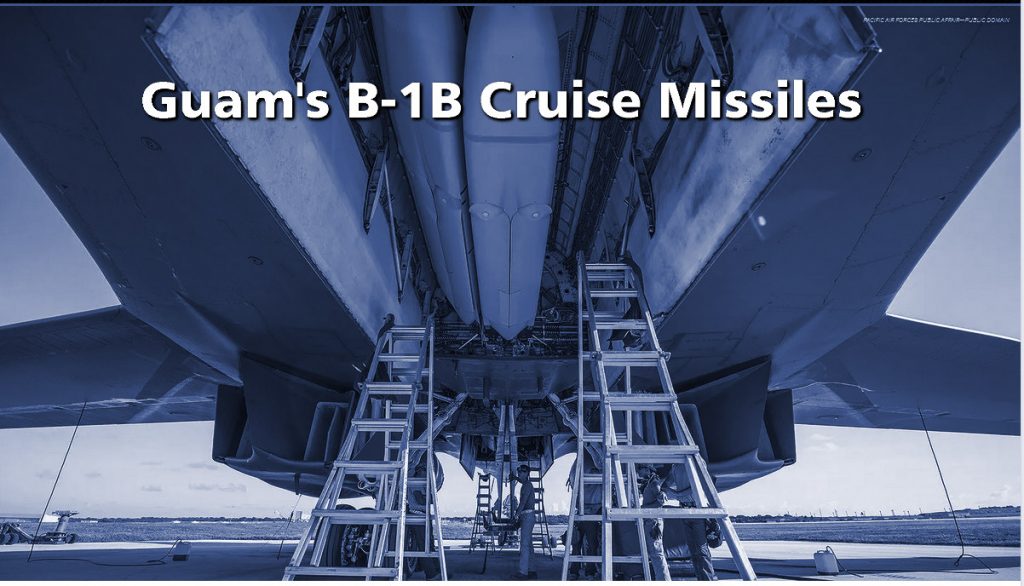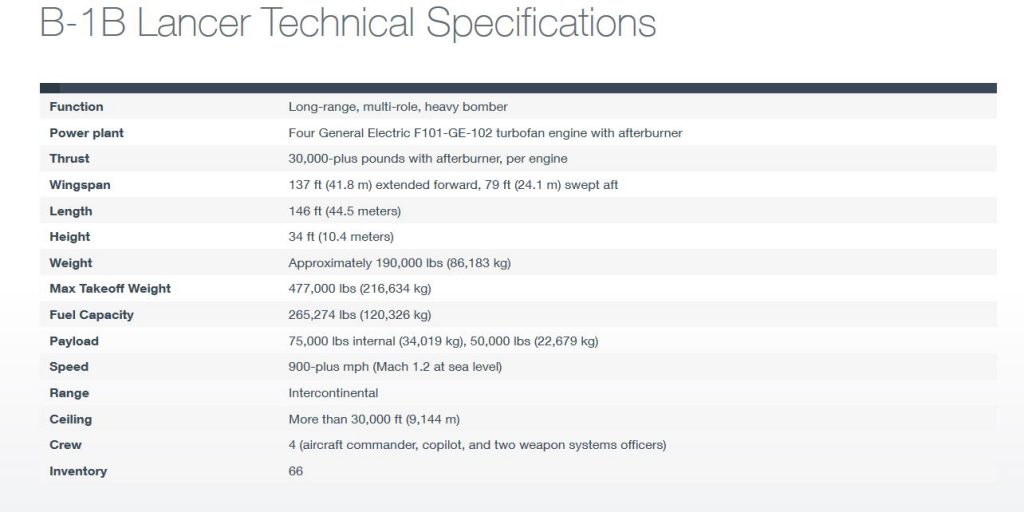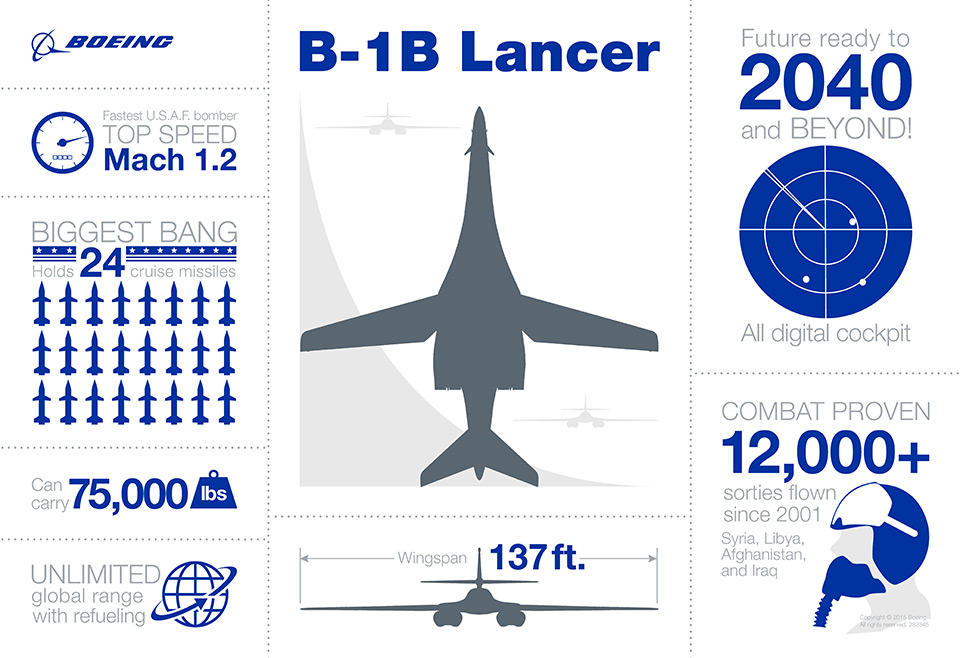
ADDITION NOTES
B-1Bs currently calling Guam home having one of its three cavernous weapons bays stuffed with live JASSMs. The images showcase the fact that the B-1B can put even a peer state’s most defended targets at risk from a standoff distance. The JASSM has a declared range of around 230 miles, while its enhanced successor, the JASSM-ER, can reach out and touch targets nearly 600 miles from its point of launch. The B-1B itself has an intercontinental range.

The AGM-158C LRASM, based on the AGM-158B Joint Air-to-Surface Standoff Missile – Extended Range (JASSM-ER), is the new low-observable anti-ship cruise missile developed by DARPA (Defense Advanced Research Projects Agency) for the U.S. Air Force and U.S. Navy. It has already been integrated on the B-1B Lancer and F/A-18E/F Super Hornet, with integration aboard the P-8 Poseidon and MK41 Vertical Launch Systems currently in the works. The B-1B can carry up to 24 AGM-158C missiles.

The missile, armed with a 1000 lb (454 kg) penetrator and blast fragmentation warhead, is capable of performing all-weather precision routing and guidance through pre-planned waypoints, before transitioning to mid-course guidance through its multimodal sensor and later to low altitude navigation for target identification and final approach. The LRASM is also equipped with Electronic Support Measure (ESM), Radar Warning Receiver (RWR) and Artificial Intelligence (AI) for threat avoidance and target recognition.

Two U.S. Air Force B-1B Lancers flew from Andersen Air Force Base, Guam, and conducted training in Alaska and Japan on May 21. The long range, long endurance training, which the U.S. Air Force (USAF) defined as a “24 hours sprint” is quite unusual given that it involved multiple training areas (or “theaters”) and multiple training events. In addition, it even had a maritime component to it.
In March 2008, the B-1B became the first aircraft to fly at supersonic speed using synthetic fuel. The fuel was a 50/50 blend of conventional JP-8 petroleum and a synthetic fuel derived from natural gas using the Fischer-Tropsch process. The flight was part of an ongoing USAF program to certify the alternative fuel for all USAF aircraft.

The low radar cross section, variable-geometry wings, modern avionics, and afterburning engines enable the B-1 to carry the largest payload strike and offers long range, maneuverability, high speed and survivability. The B-1B Lancer was developed by Rockwell International, now Boeing Defense And Space Group, and is the US Air Force long-range strategic bomber. The B-1B has the largest internal payload of any current bomber.




